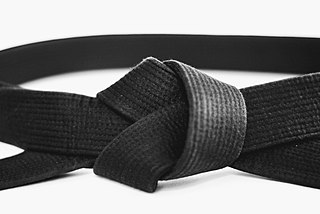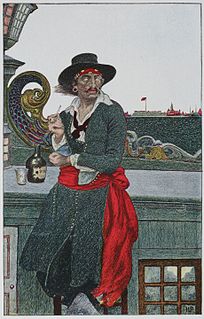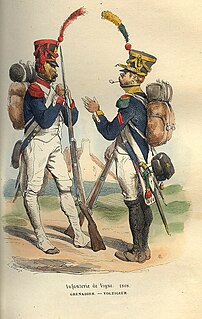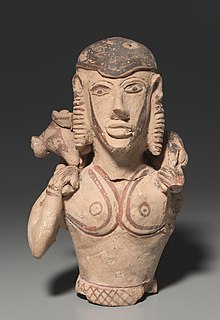 W
WA baldric is a belt worn over one shoulder that is typically used to carry a weapon or other implement such as a bugle or drum. The word may also refer to any belt in general, but this usage is poetic or archaic. In modern contexts, military drum majors usually wear a baldric.
 W
WA bandolier or a bandoleer is a pocketed belt for holding either individual bullets, or belts, of ammunition. It is usually slung sash-style over the shoulder, with the ammunition pockets across the midriff and chest. Though functionally similar, they are distinct from chest rigs, which are designed to hold magazines instead.
 W
WBatman's utility belt is a feature of Batman's costume. Similar belts are used by the various Robins, Batgirl, and other members of the Bat-family.
 W
WA belt is a flexible band or strap, typically made of leather, plastic, or heavy cloth, worn around the natural waist or near it. The ends of a belt are free; and a buckle forms the belt into a loop by securing one end to another part of the belt, at or near the other end. Often, the resulting loop is smaller than the hips. Belts come in many lengths because of the variety in waist sizes, and most belts can be adjusted at the buckle to suit the wearer's waist.
 W
WA belt buckle is a buckle, a clasp for fastening two ends, such as of straps or a belt, in which a device attached to one of the ends is fitted or coupled to the other. The word enters Middle English via Old French and the Latin buccula or "cheek-strap," as for a helmet. Belt buckles and other fixtures are used on a variety of belts, including cingula, baltea, baldrics and later waist-belts.
 W
WThe belt hook is a device for fastening that predates the belt buckle.
 W
WBelting is the use of belts made of strong materials as a whip-like instrument for corporal punishment. Although also used in educational institutions as a disciplinary measure, it has most often been applied domestically by parents. This practice has now been abolished by most schools, at least in the Western world, as it is seen by many as an abusive and excessive punishment.
 W
WThe Bendle or Bendel is a belt primarily used to fulfill the Jewish commandment of separating the mind and the heart. It is primarily used by unmarried Chabad Chasidim during prayer. The Bendle is also worn shortly before prayer just as a gartel is, the only exception is that the bendle is used by non-married Chabad Haredi Jews during prayer. It does fulfill all the requirements of its cousin "the gartel" but, unlike the gartel which is worn on the outside of the bekishe or coat, the bendle is worn on the inside on top of the tallis kattan on the waist such as Chabad-Lubavitch. This is only for Chabad Hasidim and not all Chabadniks wear a bendle just preferring a standard belt. Most non-Chabad Hasidic, non-Hasidic Haredi and Orthodox Jews don a Gartel before prayer, whether married or unmarried..
 W
WIn East Asian martial arts, the black belt is associated with expertise, but may indicate only competence, depending on the martial art. The use of colored belts is a relatively recent invention dating from the 1880s.
 W
WThe Brez is a traditional belt worn by men throughout Albania, Kosovo, North Macedonia, Serbia, Montenegro and in the Arbëresh villages of Italy. It originates directly from the Illyrian belt.
 W
WThe cincture is a rope-like or ribbon-like article sometimes worn with certain Christian liturgical vestments, encircling the body around or above the waist. There are two types of cinctures: one is a rope-like narrow girdle or rope-like belt around the waist. The other type is a broad ribbon of cloth that runs around the waist and usually has a section that hangs down from the waist; this type is often called a "band cincture". One or both types are typically used in various Christian denominations. Both types are used in the various Western rites of the Catholic Church and provinces of the Anglican Communion. Consecrated members of the various Eastern rites, whether in the Catholic Church, or in the various Orthodox communions, sometimes wear a belt referred to as a zone.
 W
WThe Cincture of the Theotokos is believed to be a relic of the Theotokos, now in the Vatopedi monastery on Mount Athos, which is venerated by the Holy Orthodox Church. The word "cincture" is sometimes also translated as "belt", "sash" or "girdle". It is the Orthodox equivalent of the Girdle of Thomas in the Western church, and the Syriac Holy Girdle.
 W
WA cummerbund is a broad waist sash in various designs including pleats, that was worn with double-breasted tail coats, it is now often worn with single-breasted dinner jackets. The cummerbund originated in Persia and was adopted by British military officers in colonial India, where they saw it worn by sepoys of the British Indian Army. It was adopted as an alternative to the waistcoat, and later spread to civilian use. The modern use of the cummerbund to Europeans and North Americans is as a component of traditional black tie events.
 W
WA police duty belt is a belt, typically constructed of nylon or leather used by police, prison and security officers to carry equipment easily in a series of pouches attached to the belt, in a readily-accessible manner, while leaving the hands free to interact. This belt can carry any number of useful items, ranging from handcuffs to guns.
 W
WA waist bag, or fanny pack (US), belt bag, moon bag, belly bag, Gee Bag (Ireland) or bumbag is a small fabric pouch worn like a belt around the waist by use of a strap above the hips that is secured usually with some sort of buckle. The straps sometimes have tri-glide slides, making them adjustable in order to fit properly. It can be considered as a purse worn around the waist.
 W
WThe gartel is a belt used by Jewish males, predominantly Hasidim, during prayer. "Gartel" is Yiddish for "belt". The word comes from the same source as German "Gürtel", which is also cognate with the English "girdle", and "girt".
 W
WA garter is an article of clothing comprising a narrow band of fabric fastened about the leg to keep up stockings. In the eighteenth to twentieth centuries, they were tied just below the knee, where the leg is most slender, to keep the stocking from slipping. The advent of elastic has made them less necessary from this functional standpoint, although they are still often worn for fashion. Garters have been widely worn by men and women, depending on fashion trends.
 W
WA belt, especially if a cord or rope, is called a girdle if it is worn as part of Christian liturgical vestments, or in certain historical, literary or sports contexts.
 W
WThe Girdle of Thomas, Virgin's Girdle, Holy Belt, or Sacra Cintola in modern Italian, is a Christian relic in the form of a "girdle" or knotted textile cord used as a belt, that according to a medieval legend was dropped by the Virgin Mary from the sky to Saint Thomas the Apostle at or around the time of the Assumption of Mary to heaven. The supposed original girdle is a relic belonging to Prato Cathedral in Tuscany, Italy and its veneration has been regarded as especially helpful for pregnant women. The story was frequently depicted in the art of Florence and the whole of Tuscany, and the keeping and display of the relic at Prato generated commissions for several important artists of the early Italian Renaissance. The Prato relic has outlasted several rivals in Catholic hands, and is the Catholic equivalent of the various relics held by the Cincture of the Theotokos of Eastern Orthodox Church and Holy Girdle of Syriac Orthodox Church.
 W
WHaramaki are items of Japanese clothing that cover the stomach. They are worn for health and fashion reasons.
 W
WThe Holy Girdle, also known as the Girdle of Thomas, Holy Girdle of Mary, Holy Soonoro, (or) Zunoro, and Holy Belt of Saint Mary the mother of Jesus, is a relic of the Blessed Virgin Mary which is one of the important relics of Syriac Orthodox Church and venerated by Oriental Orthodox Communion. The word "soonoro" is also translated as "belt", "sash" or "girdle". It is the Oriental Orthodox equivalent of the Girdle of Thomas in the Western church, and the Cincture of the Theotokos in the Eastern Orthodox Church, now located at Mount Athos.
 W
WThe International Peace Belt is a living symbol of the peaceful unity of all nations.
 W
WIn Norse mythology, the megingjörð is a belt worn by the god Thor. The Old Norse name megin means power or strength, and gjörð means belt.
 W
WMoney belts are belts with secret compartments, often worn by tourists. One form of money belt is a belt with a pouch attached to the front which is worn under a shirt to protect valuables from thieves and pickpockets.
 W
WAn obi is a belt of varying size and shape worn with both traditional Japanese clothing and uniforms for Japanese martial arts styles. Originating as a simple thin belt in Heian period Japan, the obi developed over time into a belt with a number of different varieties, with a number of different sizes and proportions, lengths, and methods of tying. The obi, which once did not differ significantly in appearance between men and women, also developed into a greater variety of styles for women than for men.
 W
WKontush belt was a cloth sash used for girding a kontusz. It was one of the most distinctive items of male dress of Polish and Lithuanian nobility (szlachta) from about 17th through the 19th centuries. In an earlier period, sometimes narrower sashes of fine cloth or silk net were worn, but the wide kontusz sash is specific to the later period.
 W
WA red belt is one of several colored belts used in some martial arts to either denote rank or differentiate opponents in a competition. Like the more commonly known black belt, its use varies between arts, with most using it for the style founder, grandmaster or other high rank, while others use it as the immediately pre–black belt rank or even to denote a beginner who holds no rank. In some schools, especially those with lineage related to Kodokan Judo, a red belt signifies ninth or tenth degree Dan rank, the highest ranks attainable.
 W
WThe Russell Company Upper Mill is an historic structure in Middletown, Connecticut, built in 1836 and listed on the National Register of Historic Places. The building stands at the junction of Russell Street and East Main Street in South Farms. There is a small pond to the south. East Main Street's commercial and industrial development ends there. To the north, small businesses border the street, followed by the buildings of Russell Manufacturing Company, the area's most dominant feature. Russell Street crosses Sumner Brook nearby and ascends to a large residential district to the west. The mill is currently a condo-apartment complex.
 W
WThe Sam Browne belt is a wide belt, usually leather, supported by a narrower strap passing diagonally over the right shoulder. It is most often a part of a military, para-military or police uniform.
 W
WThe Sanseer Mill is a historic 19th-century mill at 282 Main Street Extension in Middletown, Connecticut. It was added to the United States National Register of Historic Places in 1986.
 W
WA sash is a large and usually colorful ribbon or band of material worn around the body, draping from one shoulder to the opposing hip, or else running around the waist. The sash around the waist may be worn in daily attire, but the sash from shoulder to hip is worn on ceremonial occasions only. Ceremonial sashes are also found in a V-shaped format, draping from both shoulders to the stomach like a large necklace.
 W
WA senninbari or one thousand stitch is a belt or strip of cloth stitched 1000 times and given as a Shinto amulet by Japanese women to soldiers going away to war.
 W
WIn military uniforms, a shoulder belt is a wide belt worn usually over the shoulder and across the body. With nearly all line infantry, skirmishers, light infantry, grenadiers and guard regiments, two shoulder belts were worn - one carrying the cartridge box, and another for the bayonet, a sword, or other military equipment.
 W
WSuspenders or braces are fabric or leather straps worn over the shoulders to hold up skirts or trousers. The straps may be elasticated, either entirely or only at attachment ends, and most straps are of woven cloth forming an X or Y shape at the back. Suspenders are typically attached to skirts and trousers with clips or buttons using leather tabs at the ends.
 W
WUwa-obi (上帯) a type of belt/sash that was worn by the samurai class and their retainers in feudal Japan. The uwa-obi was used to attach the sageo of the sword or swords worn by a samurai in order to secure it, other weapons and equipment would be tied to the uwa-obi as well. The uwa-obi was made from linen and cloth made of cotton, it would be wound two to three times around the body when worn. When the uwa-obi was worn with the attire or armour of the samurai, it would first be folded in two, then twisted and then a piece of leather was placed within the centre. This method was used to find the middle of the uwa-obi in a dark area. When putting on the uwa-obi, it was worn with the center in the front of the Dou (dō), then the two ends would be wound around the waist area and back to the front, the uwa-obi would be tied in front rather firmly with the hanamusubi knot.
 W
WA webbed belt, military belt or skater belt is a type of belt, normally made of webbing, distinguished by its belt buckle design and lack of holes in the cord, which is usually found in other belts where a pin is used as the fastening mechanism in the belt buckle.
 W
WThe zone is a form of girdle or belt common in the ancient eastern Mediterranean. The term occurs in Homer, for instance, as girdle and can also refer to the waist itself. Classical Greek had a verb put a girdle around the loins, or "gird one's self."
 W
WA zoster was a form of girdle or belt worn by men and perhaps later by women in ancient Greece, from the Archaic period to the Hellenistic period.